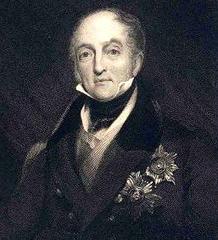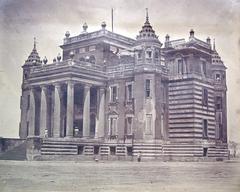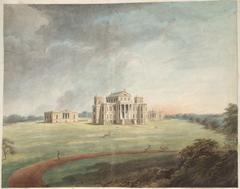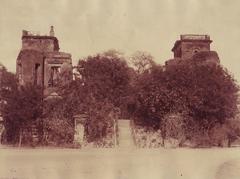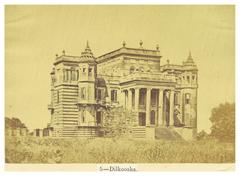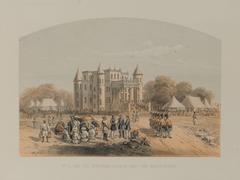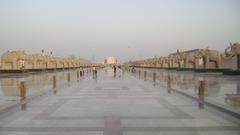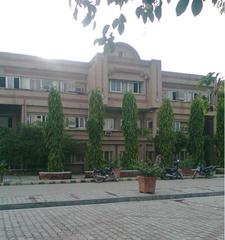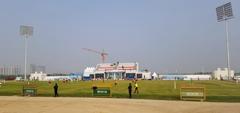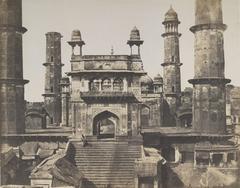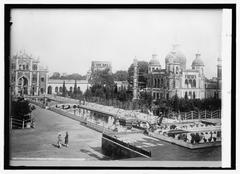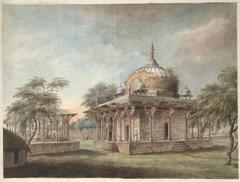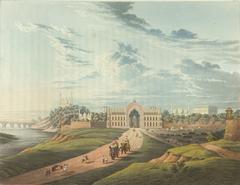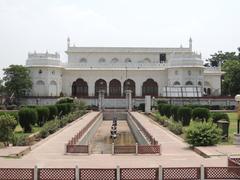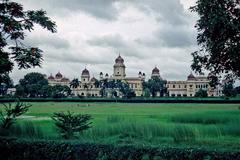
Visiting Dilkusha Kothi: History, Tickets, and Tips
Date: 24/07/2024
Introduction
Dilkusha Kothi, nestled in the heart of Lucknow, India, is an architectural marvel that narrates a rich tapestry of colonial and Indian history. This historical monument, built in the late 18th century, originally served as a hunting lodge for Nawab Saadat Ali Khan and was later expanded by Major Gore Ouseley, the British Resident General (Travelsetu). The structure is a rare blend of English Baroque and Indian styles, characterized by its grand symmetrical facade, imposing towers, and intricate interior plasterwork. Over the years, Dilkusha Kothi has served various roles, from a royal retreat to a military hospital during the Indian Rebellion of 1857, making it a site of immense historical significance (Navrang India).
Today, despite its dilapidated state, Dilkusha Kothi continues to attract visitors who are drawn to its historical and architectural allure. Efforts are ongoing to preserve and restore this heritage site, integrating technology to enhance the visitor experience and promote sustainable tourism (Lucknow Social). This comprehensive guide aims to provide essential information about visiting Dilkusha Kothi, including its architectural significance, visiting hours, ticket prices, travel tips, and more.
Table of Contents
- Introduction
- Architectural Significance
- Visitor Information
- Visitor Experience and Amenities
- Cultural Events and Heritage Walks
- FAQ
- Conclusion
Architectural Significance
Colonial and Indian Architectural Fusion
Dilkusha Kothi stands as a testament to the fusion of English and Indian architectural styles, a rarity in the region. Built in the late 18th century, the structure was initially designed as a hunting lodge for Nawab Saadat Ali Khan and later expanded by Major Gore Ouseley, the British Resident General. The Kothi’s design is predominantly English Baroque, a style characterized by grandeur, drama, and movement, which was unusual for the Indian subcontinent at the time (Travelsetu).
Symmetrical Facade and Towers
The palace features a grand, symmetrical facade with two massive towers on either side, creating a balanced and imposing appearance. The front entrance is flanked by two smaller towers, each topped with a dome, adding to the structure’s majestic aura. The use of red brick with white stucco trim and decorative plasterwork further enhances its visual appeal (Lucknow Social).
Interior Grandeur
Inside, the palace boasts grand halls and rooms with high ceilings and ornate plasterwork. The interiors were designed to impress, featuring a grand ballroom used for dances and social gatherings. This ballroom, along with other rooms, showcased the opulence and social status of its occupants. The high ceilings and intricate plasterwork are indicative of the English Baroque style, emphasizing verticality and elaborate decoration (Lucknow Social).
Gardens and Landscaping
The gardens surrounding Dilkusha Kothi were equally magnificent, featuring fountains, ponds, and landscaped lawns. These gardens were designed to complement the grandeur of the palace, providing a serene and picturesque environment. The layout of the gardens reflects the English landscape garden style, which aimed to create a naturalistic yet carefully designed landscape (Travelsetu).
Historical Modifications and Uses
Over the years, Dilkusha Kothi underwent several modifications and served various purposes. During the Indian Rebellion of 1857, the palace was used as a military hospital by British forces. This period saw significant damage to the structure, particularly during the siege of Lucknow. After the rebellion, the palace was returned to civilian use and underwent renovations to restore its former glory (Navrang India).
Current State and Preservation Efforts
Today, Dilkusha Kothi lies in a state of ruin, with much of its structure and decoration destroyed due to neglect, lack of maintenance, and natural disasters such as floods and earthquakes. Despite its dilapidated state, the palace remains a popular tourist attraction, drawing visitors who are fascinated by its historical and architectural significance. Efforts have been made to restore the palace, but these have been hampered by lack of funding and bureaucratic obstacles (Lucknow Social).
Technological Integration and Sustainable Tourism
In recent years, the integration of technology has improved the tourism experience at Dilkusha Kothi. Interactive mobile apps and augmented reality experiences enable visitors to visualize the erstwhile grandeur of the Kothi. These technological advancements provide a more immersive and educational experience, helping visitors understand the historical context and architectural significance of the site. Additionally, there has been a focus on sustainable tourism practices to ensure the conservation of the historical site while facilitating tourism (Travelsetu).
Visitor Information
- Visiting Hours: Dilkusha Kothi is open daily from 9 AM to 5 PM.
- Ticket Prices: Entry is free for all visitors.
- Location: The Kothi is located in the heart of Lucknow, easily accessible by public transport and car.
- Accessibility: The site is partially accessible to visitors with disabilities.
Visitor Experience and Amenities
The Government of Uttar Pradesh, along with the Archaeological Survey of India, has taken significant steps to preserve Dilkusha Kothi and make it more accessible to visitors. The gardens around the Kothi have been developed, seating arrangements have been added, and signages providing historical information have been introduced. These enhancements augment the overall tourist experience, making it easier for visitors to explore and appreciate the site (Travelsetu).
Cultural Events and Heritage Walks
Dilkusha Kothi has also become a venue for cultural events and heritage walks. These events offer insights into the Kothi’s past and its role in the 1857 uprising, adding to the site’s charm. Heritage walks, in particular, have become increasingly popular, providing guided tours that delve into the historical and architectural significance of the Kothi. These activities not only enhance the visitor experience but also help in promoting the cultural heritage of Lucknow (Travelsetu).
FAQ
- What are the visiting hours for Dilkusha Kothi?
- Dilkusha Kothi is open daily from 9 AM to 5 PM.
- How much do tickets to Dilkusha Kothi cost?
- Entry is free for all visitors.
Conclusion
In conclusion, a visit to Dilkusha Kothi offers a unique opportunity to explore the confluence of British and Indian architectural styles and delve into the rich history of Lucknow. Despite the challenges posed by time and neglect, this historical site remains a testament to the city’s cultural heritage and the pivotal events of the 19th century (Lucknow Pulse). The ongoing preservation efforts and the integration of modern technology ensure that visitors can fully appreciate the grandeur of Dilkusha Kothi’s past while enjoying a comfortable and educational experience. Whether you’re a history enthusiast, an architecture aficionado, or a casual traveler, Dilkusha Kothi promises an enriching journey through time. Plan your visit today and immerse yourself in the captivating history and beauty of this remarkable monument (Travelsetu).
References
- Travelsetu, 2024, Dilkusha Kothi Tourism History
- Lucknow Social, 2024, Dilkusha Kothi
- Navrang India, 2017, Dilkusha Kothi Remarkable Building
- Lucknow Pulse, 2024, Dilkusha Kothi Lucknow
